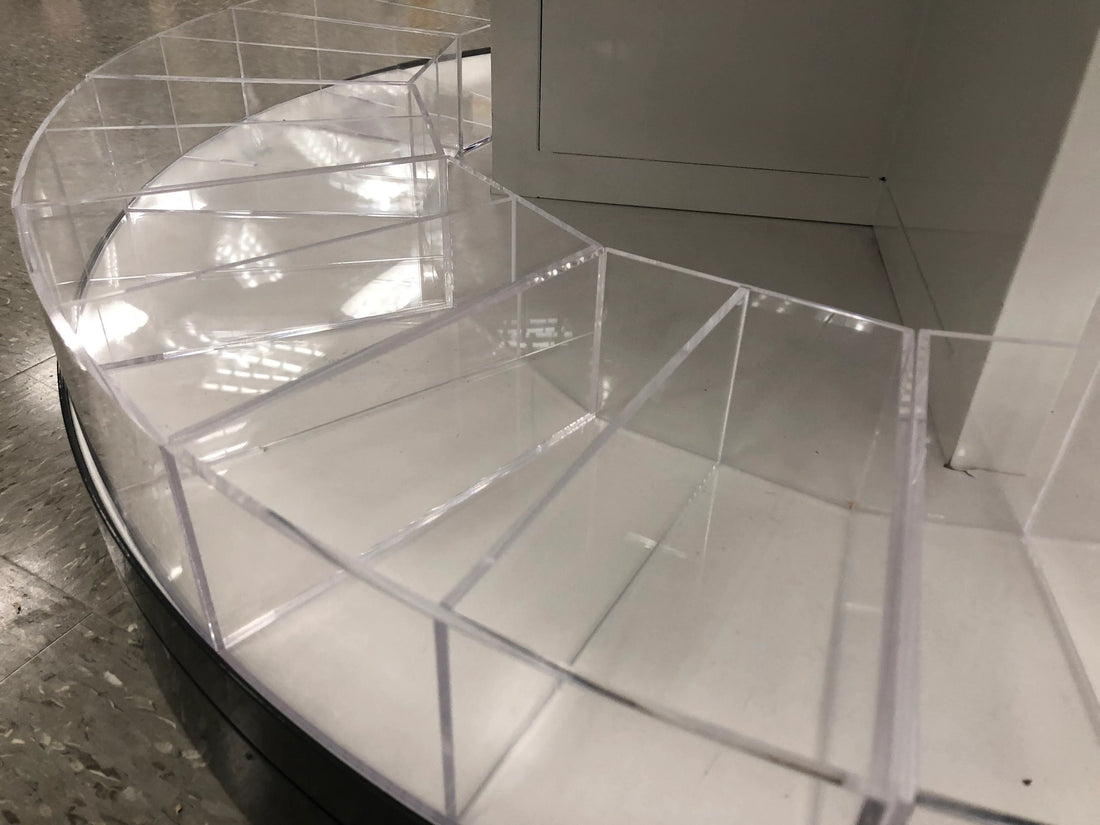
Everything You Need to Know About Acrylic Fabrication
Share
Acrylic fabrication is a fascinating and versatile process that transforms sheets of acrylic into custom-designed products used in various industries. From retail displays to medical devices, acrylic’s durability, clarity, and ease of fabrication make it a popular choice for many applications. In this article, we'll dive into everything you need to know about acrylic fabrication, including its benefits, processes, and applications.
What is Acrylic Fabrication?
Acrylic fabrication involves shaping, cutting, and assembling acrylic sheets into finished products. Acrylic, also known as Plexiglas or PMMA (Polymethyl methacrylate), is a transparent thermoplastic often used as a lightweight and shatter-resistant alternative to glass. The fabrication process can create a wide range of products, from simple display boxes to intricate components for industrial use.
Benefits of Acrylic
1. Clarity and Transparency
Acrylic is renowned for its optical clarity, making it ideal for applications where transparency is essential. It allows up to 92% of light to pass through, offering clear visibility for displays and enclosures.
2. Durability
Acrylic is highly durable and resistant to impact, making it a safer alternative to glass. It is less likely to break or shatter, ensuring longevity and reliability in various applications.
3. Versatility
Acrylic can be easily cut, shaped, and molded into different forms, providing endless design possibilities. Its versatility makes it suitable for a wide range of industries, from retail to healthcare.
4. Lightweight
Despite its strength, acrylic is lightweight, making it easy to handle, transport, and install. This property is particularly beneficial in applications where weight is a concern.
5. Weather Resistance
Acrylic is resistant to UV light and weathering, making it an excellent choice for outdoor applications. It does not yellow or become brittle over time, maintaining its clarity and appearance.
Acrylic Fabrication Processes
1. Cutting
Cutting is the first step in acrylic fabrication. Acrylic sheets can be cut to size using various methods, including laser cutting, CNC routing, and sawing. Laser cutting provides precise and clean edges, while CNC routing allows for intricate designs and patterns.
2. Bending
Bending acrylic involves heating the material until it becomes pliable and then shaping it into the desired form. Techniques such as line bending, drape forming, and vacuum forming are commonly used to create bends and curves in acrylic sheets.
3. Polishing
After cutting and shaping, the edges of acrylic pieces may need to be polished to achieve a smooth and clear finish. Polishing can be done using flame polishing, buffing, or sanding, depending on the desired result.
4. Bonding
Bonding or gluing is used to assemble acrylic pieces into a final product. Special acrylic adhesives create strong and seamless joints that are almost invisible. The bonding process requires precision to ensure durability and aesthetics.
5. Printing and Engraving
Acrylic can be customized with printed designs or engravings. UV printing allows for vibrant, full-color images to be applied to the surface, while laser engraving provides detailed and permanent markings. These techniques are often used for branding and personalization.
Applications of Acrylic Fabrication
1. Retail Displays
Acrylic is widely used in retail displays due to its clarity and elegance. It can be fabricated into shelves, display cases, and signage that enhance product visibility and appeal.
2. Medical Devices
In the medical field, acrylic is used to create various devices and equipment, such as incubators, display enclosures, and laboratory apparatus. Its durability and ease of sterilization make it ideal for healthcare applications.
3. Signage
Acrylic is a popular choice for signage due to its weather resistance and ability to be illuminated. Fabricated acrylic signs can be used both indoors and outdoors to convey information and attract attention.
4. Furniture
Acrylic furniture pieces, such as tables, chairs, and shelves, are stylish and modern. The material's transparency and lightweight properties make it a favorite in contemporary interior design.
5. Art and Décor
Artists and designers use acrylic to create sculptures, installations, and decorative items. Its versatility allows for innovative and creative expressions that add beauty to any space.
Conclusion
Acrylic fabrication is a dynamic process that offers endless possibilities for creating durable, clear, and aesthetically pleasing products. Its versatility, combined with its many benefits, makes acrylic an ideal material for various industries and applications. Whether you need custom displays, medical devices, or unique art pieces, acrylic fabrication can bring your ideas to life with precision and quality.
If you're interested in exploring acrylic fabrication for your next project, contact The Acrylic Factory today. Our expert team is ready to assist you in designing and producing high-quality acrylic products tailored to your needs.

1 comment
Really insightful read—thanks for breaking down the acrylic fabrication process so clearly! I’m curious though, when it comes to custom plastic fabrication, especially with more complex shapes or larger sheets, what are some of the common challenges you run into? Is there a specific method or tooling setup that works best for ensuring precision without cracking or stress marks?